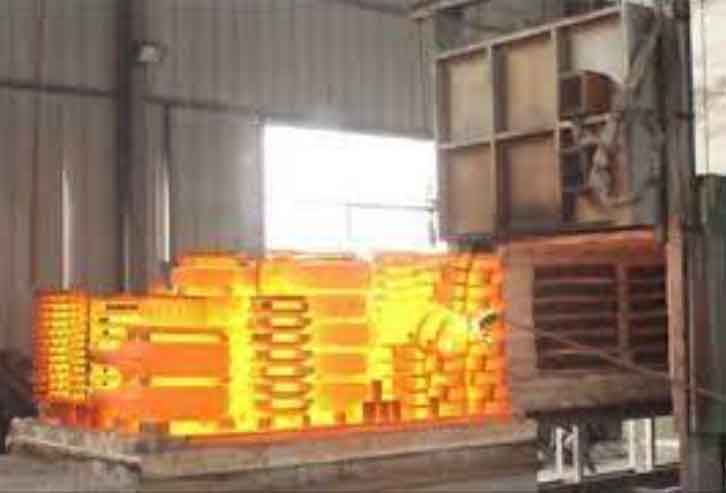Heat treatment is a powerful tool in enhancing the microstructure and properties of sand castings. Sand casting is a widely used manufacturing process that involves pouring molten metal into a sand mold to produce complex-shaped components. Heat treatment can be applied to sand castings to refine the microstructure, improve mechanical properties, and address any casting defects. Let’s explore how heat treatment can unleash the power to enhance the microstructure of sand castings.

- Solidification Structure Refinement: During the solidification process of molten metal in sand casting, the cooling rate can significantly affect the microstructure. Rapid cooling can lead to the formation of coarse grains and undesirable phases. Heat treatment, such as annealing or solution treatment, can be employed to refine the solidification structure and promote the formation of finer and more uniform grains. This helps improve mechanical properties, such as strength, ductility, and toughness.
- Phase Transformation: Some cast metals, such as steel, undergo phase transformations during cooling and solidification. Heat treatment processes like normalizing, quenching, and tempering can be utilized to control and optimize the phase transformation within the microstructure of the sand castings. By carefully selecting the heating and cooling rates, as well as the holding temperatures, specific phases can be formed or transformed to achieve desired mechanical properties.
- Modification of Defects: Sand castings may contain various defects, such as porosity, inclusions, or segregation, which can adversely affect the mechanical properties and structural integrity. Heat treatment techniques like stress relief annealing, solution annealing, or homogenization can help mitigate these defects. Heat treatment promotes the redistribution and elimination of internal stresses, improves the bonding between metal grains, and enhances the overall integrity of the casting.
- Grain Refinement: As-cast sand castings often have a coarse grain structure due to the cooling rate during solidification. Heat treatment methods like grain refinement or grain size reduction can be employed to break down these large grains into smaller ones. This finer grain structure improves the mechanical properties by increasing strength, hardness, and fatigue resistance.
- Surface Modification: Heat treatment processes can also be applied to the surface of sand castings to enhance their wear resistance, corrosion resistance, and surface hardness. Techniques like case hardening, carburizing, nitriding, or induction hardening can be employed to introduce a hardened surface layer, while maintaining a ductile and tough core.
It is important to note that the selection of heat treatment processes and parameters for sand castings depends on several factors, including the type of metal alloy, casting geometry, desired mechanical properties, and intended application of the component. The process is typically determined through a combination of experimentation, metallurgical expertise, and knowledge of the material science principles.
In conclusion, heat treatment is a valuable technique for enhancing the microstructure and properties of sand castings. It enables the refinement of solidification structures, phase transformations, defect modification, grain refinement, and surface modification. By applying appropriate heat treatment processes, manufacturers can optimize the microstructure of sand castings to achieve the desired mechanical properties and ensure the components meet the required performance standards.
